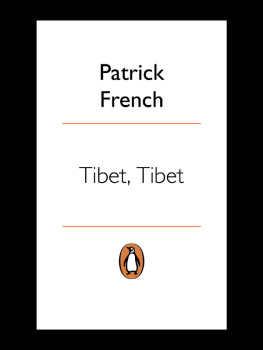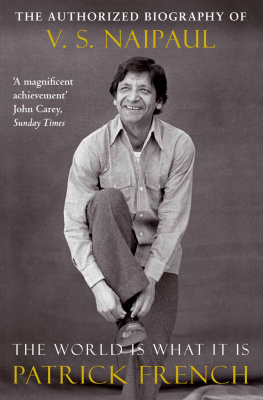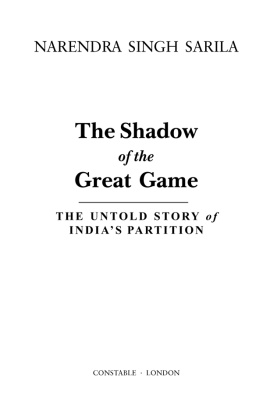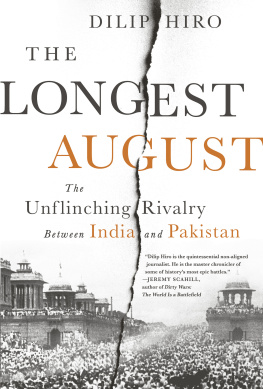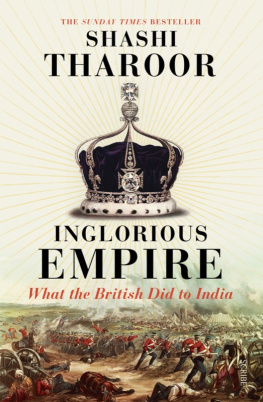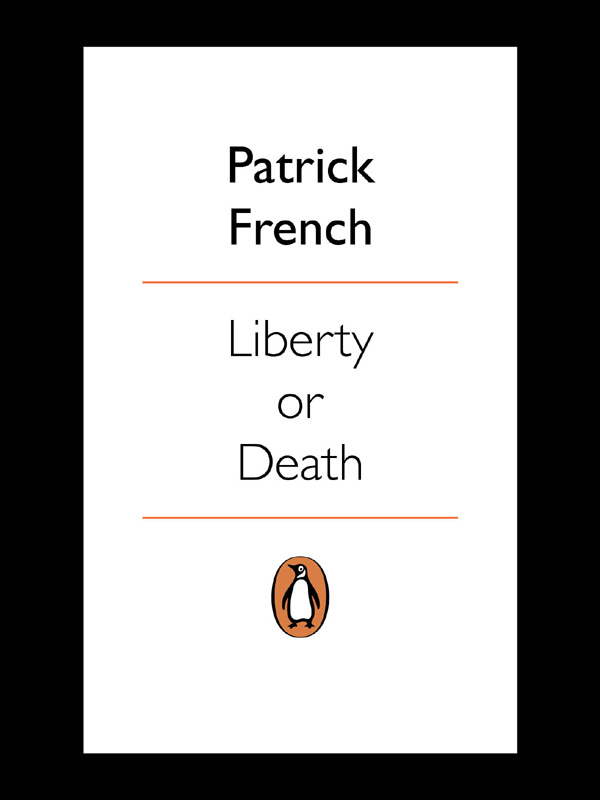
PATRICK FRENCH
Liberty or Death
Indias Journey to Independence and Division
PENGUIN BOOKS
Contents
MAPS
PENGUIN BOOKS
LIBERTY OR DEATH
Patrick French is a writer and historian, born in England in 1966. He is the author of Younghusband: The Last Great Imperial Adventurer (Beautifully written, wise, balanced, fair, funny and above all extremely original William Dalrymple), which won the Somerset Maugham Award and the Royal Society of Literature W. H. Heinemann Prize, Liberty or Death: Indias Journey to Independence and Division (French is the most impressive Western historian of modern India currently at work Herald ), which won the Sunday Times Young Writer of the Year Award, Tibet, Tibet: A Personal History of a Lost Land (Compassionate compelling and brilliant far and away the best book on Tibet I have read Daily Telegraph ) and, The World Is What It Is: The Authorized Biography of V. S. Naipaul (One of the most gripping biographies Ive ever read Hilary Spurling), which won the National Book Critics Circle Award and the Hawthornden Prize. His most recent book is India: A Portrait (Allen Lane, 2011).
Books by Patrick French
Younghusband: The Last Great Imperial Adventurer
The Life of Henry Norman
Liberty or Death: Indias Journey to Independence and Division
Tibet, Tibet: A Personal History of a Lost Land
The World Is What It Is: The Authorized Biography of V. S. Naipaul
India: A Portrait
This book is dedicated to the memory of my mother
Lavinia French
ILLUSTRATIONS
Introduction
In March 1966, a couple of months before I was born, the Prime Minister Harold Wilson announced plans to publish sets of official documents from important periods in Britains foreign relations. This led to the arrival of the twelve, magisterial volumes of Constitutional Relations Between Britain and India: The Transfer of power 19427 , the final one appearing in 1983. Trawling through literally millions of pieces of paper, a group of historians built up a remarkably detailed documentary collage of the last six years of British rule in India, showing the way in which policy was conceived, formulated and implemented. An Indian newspaper described these books as a kind of interpretive gospel, a sutra series, while one reader made the fair observation that they had a coherence so effective that the volumes afford probably the most complete evidence published for the decision-making process in government anywhere.
As I worked my way through The Transfer of Power while researching this book, it became clear that one class of document had been excluded: intelligence. This was an important omission, since like all unelected regimes, the British-controlled Government of India was forced to rely heavily on surveillance and covertly obtained information in order to retain supremacy. When I examined the archives of the India Office (the British government department which gave the Viceroy his orders), I found that certain important categories of Public and Judicial documents had been judiciously withheld from the public. I asked the declassification unit of the Foreign Office to review the status of these files, and after more than a year of prodding, they finally agreed to release all but a handful of them.
The consequence appeared in ninety-two battered, bottle-green boxes, with brass catches and flaking cream labels marked Note by Security Service 1943: Communist Survey of India, or S.C. Bose, or Censorship: H.H. The Pope and Apostolic Delegates. These were the archives of Indian Political Intelligence, or IPI, which was founded shortly before the outbreak of the First World War and survived until independence in 1947. Its existence had been mentioned to me by various elderly members of the Indian Civil Service, usually in hushed tones, but I had never realized how significant and wide-ranging an operation it had been. Although it was always a fairly small organization, it was apparent that IPI had played a central role in the attempted maintenance of British dominion over the Indian Empire.
After a few hours in the company of the ninety-two boxes, I gave them my own collective name. It was The Loss of Control , the correlative to The Transfer of Power . From the mid-1930s onwards, they evoked a consistent theme of fragility, as if successive administrations had been surprised at having been able to bluff their way through another few years. The Transfer of Power and The Loss of Control altered my view of the lead-up to Indian independence considerably, as I came to realize that the British decision to quit had been based on neither altruism nor strategic planning. It was not the logical culmination of a policy of benign imperial stewardship, like a kindly parent allowing a child to ride its bicycle unassisted from the moment it learned to pedal. Nor was it the inevitable consequence of unquenchable socio-political forces, with the people of India rising up as one to drive the invaders into the sea. For many Indians, especially in the south, the deals sewn up by English-speakers in New Delhi in the 1940s were of distant importance.
Rather, the British left India because they lost control over crucial areas of the administration, and lacked the will and the financial or military ability to recover that control. The documentation of the last years of the Indian Empire provided an unexpected tale of confusion, human frailty and neglect, moving from the florid incompetence of Churchills wartime India policy to the feeble indecision of Attlees post-war government. Many of the key events of the 1940s were the result of chance, or even of error, and some of the most important decisions of the period were made on an almost random basis. Nor was there any inevitability about the fact that the Indian Empire was dissected and partitioned, leaving a pair of accidental wings called East and West Pakistan sprouting from a truncated Indias shoulders.
Yet few moments in modern history have had a more lasting impact on so many people. As the writer and politician Andr Malraux suggested, Britains decision to get out of India was the most significant fact of the century. It removed three-quarters of King George VIs subjects overnight, reduced Britain to a third rate power, and proved that the practice of European imperialism was no longer sustainable.
The nature of the political settlement in 1947 had a calamitous impact on the subcontinent, leading to the reciprocal genocide and displacement of millions of Hindus, Muslims and Sikhs, three IndoPakistan wars, the blood-drenched creation of Bangladesh, and the long-term limitation of the regions global influence. Although more than a fifth of the worlds population presently lives in the territory of Britains former Indian Empire, continued internal conflict has left South Asia with little cohesiveness and minimal international clout. Nearly half of all Pakistani government expenditure still goes on the cold war with India, focused on the running sore of Kashmir.
In order to explain how the present situation came about, I have concentrated on the developing conflict between Congress, the Government of India and the Muslim League, which led to the transfer of power on the night of 1415 August 1947. Inevitably for a book on this subject, the story converges on Nehrus midnight hour, and passes through it before refracting out towards the present. I have in many cases excluded events, ideas and structures (Maulana Maudoodis Jamaat-i-Islami, for instance, or Lord Linlithgows plans for princely federation) which at the time looked significant, but which ultimately proved irrelevant. Instead I have mainly tended to emphasize specific and symbolic aspects of the history which may have seemed unimportant at the time, but which came to have a marked bearing on the final settlement. I have also concentrated on the character and personality of certain essential individuals namely Mohandas Gandhi, Mohammad Ali Jinnah, Vallabhbhai Patel, Winston Churchill and Lords Wavell and Mountbatten who through the interplay of events were propelled into vital roles, and so were able to remould Asia and change the lives of millions.
Next page

